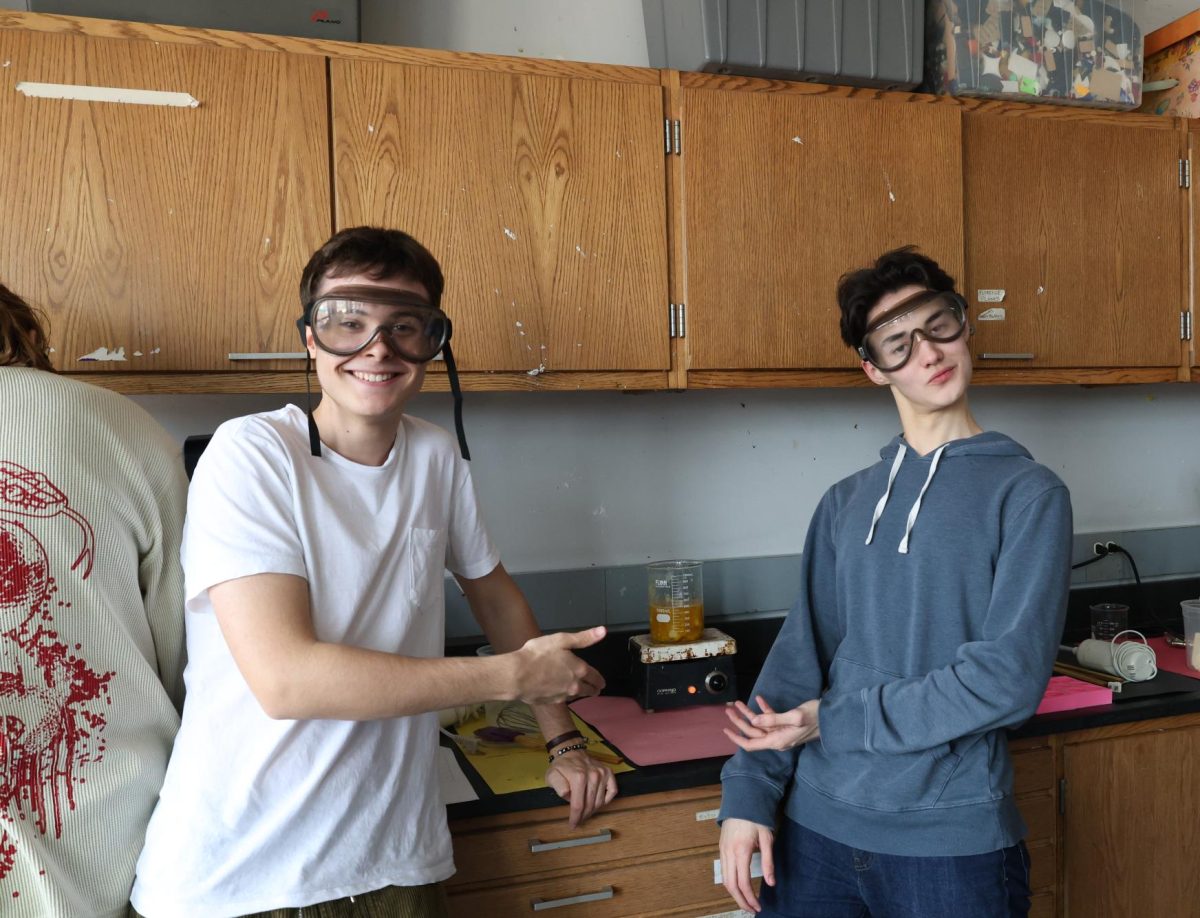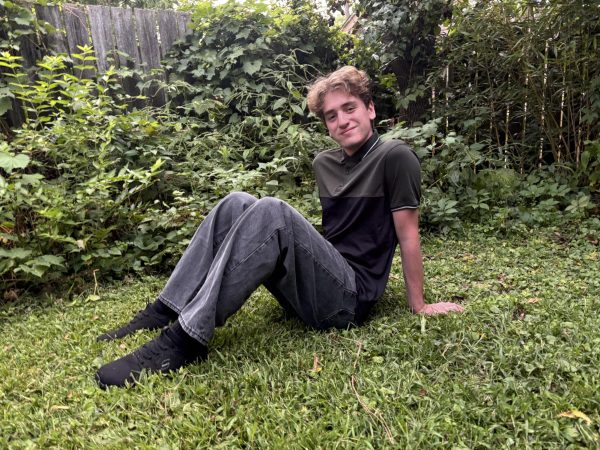In FOS classrooms at CHS, soap is currently undergoing the saponification reaction in molds. The reaction will be complete within two weeks, and the soap will be done. The soap bars will be displayed at the Arts, Science and Letters Open House on April 25, during which those attending will have the opportunity to view and purchase soaps. FOS III students just created these soaps themselves in the renowned Soap Lab.
Every year, FOS III students get to create their own bar of soap from scratch.
“When I was in younger grades, I would always hear about the soap project, and it always made me excited, knowing I would eventually be able to make soap myself,” said Clara Bailey, a FOS III student in CHS teacher Josh Skodack’s class. “It was so cool that I finally got to make soap after so many years of anticipating it.”
The Soap Lab wraps up FOS III’s unit on organic chemistry, a subfield of chemistry involving the study of organic compounds, compounds that contain hydrogen and carbon atoms. This lab is a relevant and accurate connection to organic chemistry, as it gives FOS students hands-on experience in creating an organic compound.
“Soap is an organically synthesized chemical made from fat, which contains long chains of carbon and hydrogen atoms,” said Liz Stern, a FOS III teacher. “Soap is also made from lye. When you put fat and lye together, the fat undergoes a hydrolysis reaction with the lye, which creates a combined chemical, soap, that is a solvent both in water and in grease. The dual nature of soap allows you to clean yourself.”
From corn oil to shea butter, students had access to a diverse range of fats as they crafted their soaps. Each type of fat imparts distinct qualities to the soap, and students selected fats that produced the characteristics they were aiming for.
“If you want a very conditioning soap, then you are going to use a fat with a high molecular weight that isn’t going to lather up and make small bubbles,” Stern said. “If you want a less conditioning soap, you’re going to use a fat with a low molecular weight that will make fluffy lathers. And if you want a hard soap, you’re going to look for saturated fats, while if you want a soft soap, unsaturated fats are the way to go.”
To make the soap, each lab group heated the fats they selected to about 100 degrees before mixing a dissolved form of lye in with the fat. The lye interacts with the complicated structure of fat, breaking it into fatty acid chains. Then, the lye puts a small cap of sodium on top of the fatty acid chains, which begins the soap-making process. Even though the saponification reaction starts in the lab by mixing the lye with the fat, the saponification reaction continues for at least five weeks before the soap is ready to be used.
Each group chose a theme for their soap based on the scent, color and shape of the bar. While the groups mixed their fats with lye, they had the opportunity to add fragrances and additives to the soap, which could give the soap a unique color or scent. Groups then poured their fat and lye mixtures into molds of different shapes, giving the bars particular forms.
Clara Bailey and her lab partners created a soap inspired by the movie franchise “Dune.” They used space-themed molds of stars, planets and rocket ships, as the movie is set in space. Furthermore, in “Dune,” the sand of the desert planet Arrakis is significant in its role of creating sandstorms. So, Bailey’s group produced a soap modeled after the sand from using cinnamon essential oil.
“In ‘Dune,’ the sand is described as having a cinnamon smell, so we used cinnamon oil to create that smell,” Bailey said. “We also brought in glitter, which made our soap a tannish color, just like sand. Everybody in my group loves the movie ‘Dune,’ so it was so cool that we got to make the first-ever ‘Dune’-themed soap.”
Stern believes that the Soap Lab is the highlight of FOS III, if not the highlight of all of FOS. A once-in-a-lifetime opportunity, the Soap Lab perfectly aligns with the goal of the unique FOS program that CHS has to offer.
“FOS is all about helping people understand that science is in their lives and it’s relevant to the decisions they make going forward in a career, or even just as citizens in the world,” Stern said. “Soap is something we use every day. Now, students have a new understanding of how the thing they use every day to wash their hands works. However, an actual scientist or someone working in public policy could use the concept of soap’s dual nature and solubility to develop solutions for cleaning up oil spills.”
The Soap Lab brings chemistry to life, allowing students to create organic compounds while having fun and being creative. During the Arts, Science and Letters Open House on April 25, attendees will have the opportunity to view and purchase soaps. The money raised will be donated to the FOS program to support future labs.










